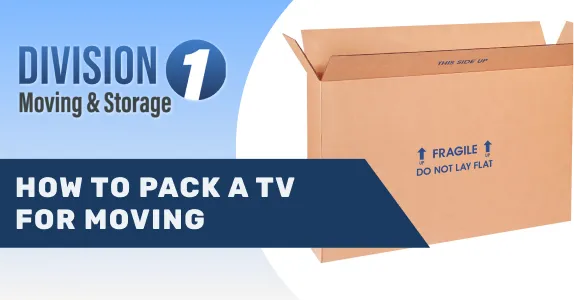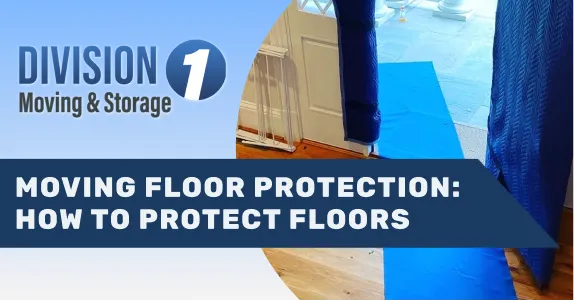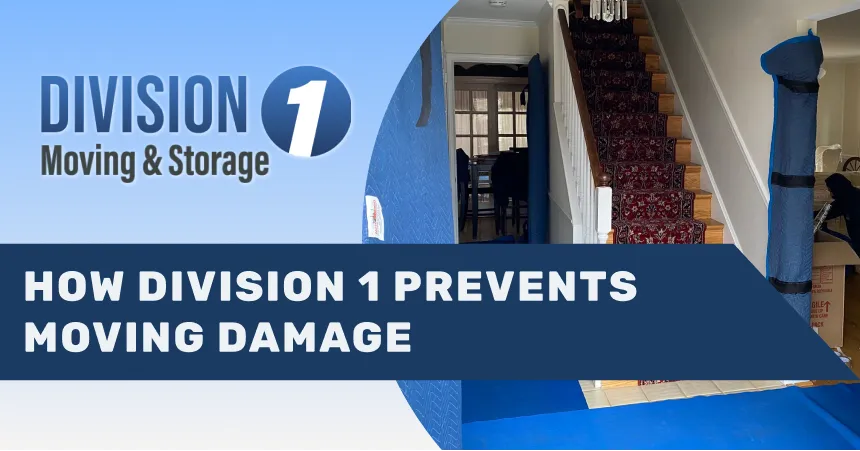Buying a new house or getting that new apartment often involves the key task of learning how to disassemble furniture for a move. This essential step not only eases the moving process but also helps in protecting your furniture from potential damage.
At Division 1 Moving, we specialize in easing the complexities of moving, particularly when it comes to disassembling furniture. Whether it's your child's bunk bed or a treasured antique dresser, we're here to transform what might feel like an overwhelming task into a smooth, manageable process. We're here to support you through this journey, ensuring you're not alone in tackling these tasks.
In this guide, we will delve into the crucial aspects of how to disassemble furniture for a move, offering insights and tips to make your transition smoother. Making sure that each piece of furniture, a cherished memory or that large ticket item, is handled with care and expertise, ready to be safely transported to your new home.
Weighing the Benefits and Challenges of Furniture Disassembly
When preparing to move furniture safely, deciding whether to disassemble your furniture is a significant consideration. This decision comes with its own set of advantages and drawbacks. Understanding these can help you make an informed choice that aligns with your moving needs and preferences.

Pros of Disassembling Furniture
When planning a move, understanding the pros of disassembling your furniture can significantly influence your moving strategy. Recognizing these benefits helps in optimizing the moving process, ensuring both the safety of your belongings and an efficient transition.
- Reduced Risk of Damage: Disassembled furniture is less prone to damage during transit, as smaller pieces are easier to handle and protect.
- Easier to Transport: Smaller, disassembled pieces are more manageable, fitting into tight spaces and making the transportation process smoother.
- Cost-Effective: Efficient packing and better space utilization in the moving truck can lead to reduced moving costs.
- Space Optimization: Disassembling furniture can free up more space in the moving truck, allowing for fewer trips or a smaller truck size.
- Improved Safety: Handling smaller, lighter pieces reduces the risk of personal injury during the move.
Cons of Disassembling Furniture
Recognizing the potential drawbacks of disassembling furniture is just as crucial as understanding its benefits. Being aware of these cons helps in preparing for and mitigating any challenges that may arise during the moving process.
- Time-Consuming: The process of disassembling can be lengthy, especially for complex or large pieces of furniture.
- Risk of Losing Parts: Small screws and components can easily be misplaced if not properly organized and stored.
- Potential for Incorrect Reassembly: Without clear labeling or instructions, reassembling the furniture at your new home can be challenging.
- Need for Tools and Skills: Disassembly often requires specific tools and a certain level of skill to execute properly.
- Possible Warranty Issues: For some furniture, disassembly can void the warranty, which is an important factor to consider.
What Types of Furniture Should Be Disassembled?
By understanding the specific needs of different types of furniture, you can make informed decisions about what to disassemble for your move. This careful approach ensures that each piece is given the attention it needs for a safe journey to your new home. Remember, a little extra time spent disassembling can lead to a lot less stress on moving day.
Let's break down this process into manageable steps, offering insights and tips to help you make the best choices for your move.

Tackling Large and Bulky Furniture
Breaking down bulky furniture into smaller, more manageable pieces ensures they can be moved through tight spaces without difficulty and transported safely. Check out this video to cut down sofa disassemble time.
Here are some other common bulky items:
- Dining Tables
- Bookcases
- Patio Furniture
- Large TV Stands and Media Consoles
- Office Desks
- Recliners and Armchairs
Handling Fragile Furniture Pieces
When moving, extra care must be taken with fragile furniture pieces. Properly handling and preparing these items for the move is crucial to ensure their safety. Here are types of fragile furniture to consider:
- Vintage Dressers and Cabinets
- Glass Coffee Tables
- Antique Chairs with Upholstery
- Mirrored Wardrobes
- China Cabinets with Glass Doors
- Delicate Lampshades and Light Fixtures
Managing Complex Furniture Items
Managing complex furniture items effectively is key to a successful move. Disassembling items not only simplifies their transportation but also aids in ensuring they can be reassembled correctly in your new home. Here are examples of items that benefit from careful disassembly:
- Modular Desks
- Entertainment Centers
- Sectional Sofa
- Custom Shelving Units.
Gathering the Materials for Furniture Disassembly
As you prepare to disassemble furniture for a move, it's crucial to start by gathering the appropriate tools and materials. By having these materials at hand, you're setting yourself up for a successful and organized move.
Let's explore the essential items you'll need to make this process as smooth as possible.

The Best Tools For Disassembling Furniture
Adding the right tools to your furniture disassembly kit can make a significant difference in ease and efficiency. Along with screwdrivers, wrenches, and hammers, here are more essential tools that can greatly aid in the disassembly of furniture:
- Allen Wrenches (Hex Keys): These are crucial for furniture that uses hexagonal bolts, commonly found in flat-pack furniture like IKEA pieces.
- Pliers: Useful for gripping and pulling out nails or staples, or holding nuts steady while you unscrew bolts.
- Electric Screwdriver or Drill: Speeds up the process of removing screws, especially useful for furniture with a large number of screws or very tight fittings.
- Rubber Mallet: This is less damaging than a regular hammer and is ideal for gently tapping parts to dislodge them without causing damage to the furniture.
- Furniture Sliders: While not a tool for disassembly per se, these can be incredibly useful for moving large pieces of furniture once they are disassembled, protecting both the furniture and your floors.
Having a home repair kit on hand will not only help streamline this process but also ensure the safety and integrity of your furniture during disassembly.
Protective Materials
When moving, the use of protective supplies are key to ensuring the safety and integrity of your furniture. Here are some essential items to consider:
- Bubble Wrap: Indispensable for wrapping glass components and delicate surfaces, it provides a cushion against scratches and breaks.
- Furniture Blankets: These thick covers offer an extra layer of protection, shielding your furniture from dings and scratches during the move.
- Stretch Wrap: This plastic wrap clings to itself and is perfect for securing drawers and doors in place, as well as protecting upholstery from dirt and moisture.
- Packing Peanuts: Great for filling voids in boxes containing delicate items, providing additional cushioning and support.
- Corner Protectors: These are especially useful for safeguarding the sharp edges and corners of furniture from chips and damage during transit.
Organizational Supplies
Organizational supplies are essential for keeping track of all the small parts and pieces during furniture disassembly and reassembly. Here are some key items to include in your moving toolkit:
- Ziploc Bags: Ideal for keeping small items like screws, bolts, and washers together, preventing them from getting lost.
- Labels: Use these to clearly mark each Ziploc bag and piece of disassembled furniture, ensuring easy identification for reassembly.
- Permanent Markers: Essential for writing on labels or directly on bags, these markers help in creating clear, smudge-proof labels.
- Tape Measure: Handy for measuring furniture and spaces in your new home to plan where everything will go.
- Notebook and Pen: Keep a record of where each part belongs, which can be invaluable when it's time to put everything back together.
- Colored Stickers: Use different colors to categorize and code various pieces and parts, making the reassembly process even more organized.
How to Master Furniture Disassembly
With the right approach, disassembling furniture can be a straightforward and satisfying part of your moving process. Careful planning and execution are key to ensuring that your furniture is safely prepared for the move. Here's a step-by-step guide to help you navigate this task, along with some helpful resources for additional guidance.
Consult Furniture Manuals
The best first step in disassembling any piece of furniture is to consult the manufacturer's manual. These manuals often provide specific instructions and diagrams that are invaluable during disassembly.
Tip: If you've lost the physical manual, try searching online. Many manufacturers provide digital copies on their websites.
Remove Loose Components
Taking the time to remove loose components is a strategic move that can significantly reduce the stress and physical strain of relocating. Start by focusing on the parts of the furniture that aren't nailed down or screwed in.
- Cushion Removal: Removing them not only makes the furniture lighter but also prevents any accidental damage or dirt getting on them during the move.
- Drawer Removal: Drawers can be a bit tricky, with locks, catches, or specific ways they need to be lifted to come out smoothly. So, for a no-fuss method of drawer removal, check out this tutorial.
- The Shelf Situation: f they can be removed, do it. It'll prevent them from shifting around or getting damaged. Plus, emptying the shelves means less weight to deal with when lifting and moving the main piece of furniture.
Detach Removable Parts
There's a simple trick to make moving easier: detach any removable parts such as legs, handles, and other elements. This is the perfect time to utilize your screwdrivers and wrenches.
For a hands-on guide, check out this visual tutorial on furniture leg removal. And if you're dealing with handles and other hardware, this article provides excellent tips on handle detachment. Simplifying your move starts with these small steps.
Carefully Separate Sections
For larger items, such as sectional sofas or bed frames, you'll need to methodically take apart each section. This is where labeling each part as you go can be incredibly helpful.
- Sectional Sofa Disassembly: This guide walks you through the steps of disassembling a sectional sofa.
- Bed Frame Disassembly: Check out this tutorial for detailed instructions on taking apart a bed frame.
How to Stage the Furniture for Movers
After dismantling your furniture for a move, staging it smartly is crucial for smooth transportation. Here’s a strategic approach to ensure everything is ready for the movers:
.webp)
- Label Meticulously: Assign a label to each piece of disassembled furniture, including the small hardware parts. This isn’t just about identifying items; it’s about matching each piece to its counterpart for reassembly. Use stickers or masking tape and a marker for clear, visible labeling.
- Secure Fragile Components: Fragile parts like glass panels or delicate wood pieces need extra care. Wrap them in bubble wrap securely and use tape to keep the wrap in place. This prevents scratches or breaks during the move.
- Group by Size and Sensitivity: Organize the disassembled parts into groups based on their size and fragility. Keep larger, sturdy pieces like wooden planks together, while more delicate items, such as glass shelves, should be grouped separately. This not only makes loading more systematic but also ensures delicate items receive the attention they need.
- Easy Access for Loading: Position these grouped items in an area close to where the moving truck will be parked. The goal is to create an easy flow from the house to the truck. This reduces the time and effort needed for loading and minimizes the risk of damage as items are moved a shorter distance.
Choosing Division 1 Moving for Your Moving Needs
When you're on the brink of a move, finding the right partner for furniture disassembly is a crucial decision. Division 1 Moving emerges as the ideal choice, seamlessly blending care and expertise in handling your furniture. Our approach is not just about moving items; it’s about respecting and preserving your belongings.

Unmatched Professionalism and Experience
At Division 1 Moving, we take pride in our team’s specialized skills in furniture disassembly. With years of experience under their belts, our experts ensure that your furniture is disassembled safely and efficiently. Recognizing the distinctiveness of each piece, we offer a personalized approach, whether it’s for a delicate antique or a sleek, modern unit.
Comprehensive Services
Our range of services is extensive, encompassing everything from standard beds to intricate modular desks. We're adept at tackling the specific demands of various furniture styles. Beyond just taking things apart, we also manage the reassembly of your furniture in your new home, ensuring every piece is reassembled and placed according to your preferences.
Safety and Security
We prioritize the safety and security of your furniture. Utilizing high-quality packing materials, such as bubble wrap and furniture blankets, we ensure each disassembled item is fully protected from potential transit damage. Our meticulous approach includes detailed labeling and careful storage of every component, laying the groundwork for a smooth and accurate reassembly process.
Customer-Centric Approach
Keeping you in the loop is a key aspect of our service. We maintain open and clear communication throughout your moving process, ensuring you’re always informed about how your furniture is being handled. We understand the stresses of moving and offer flexible scheduling to accommodate your needs, aiming to make your move as convenient and hassle-free as possible.
Affordable and Reliable
At Division 1 Moving, we offer transparent and competitive pricing, ensuring you receive excellent value for our top-notch services. Opting for Division 1 Moving means choosing a partner who values punctuality and reliability, respecting the critical timing of your move.
Your Moving Ally
Our ultimate goal is your complete satisfaction. We strive to transform your moving experience into a positive and stress-relieving journey. As a Virginia-based company, we’re deeply connected to the community, offering a reliable and empathetic service tailored to the local needs.
%201.webp)






.webp)



























.webp)



